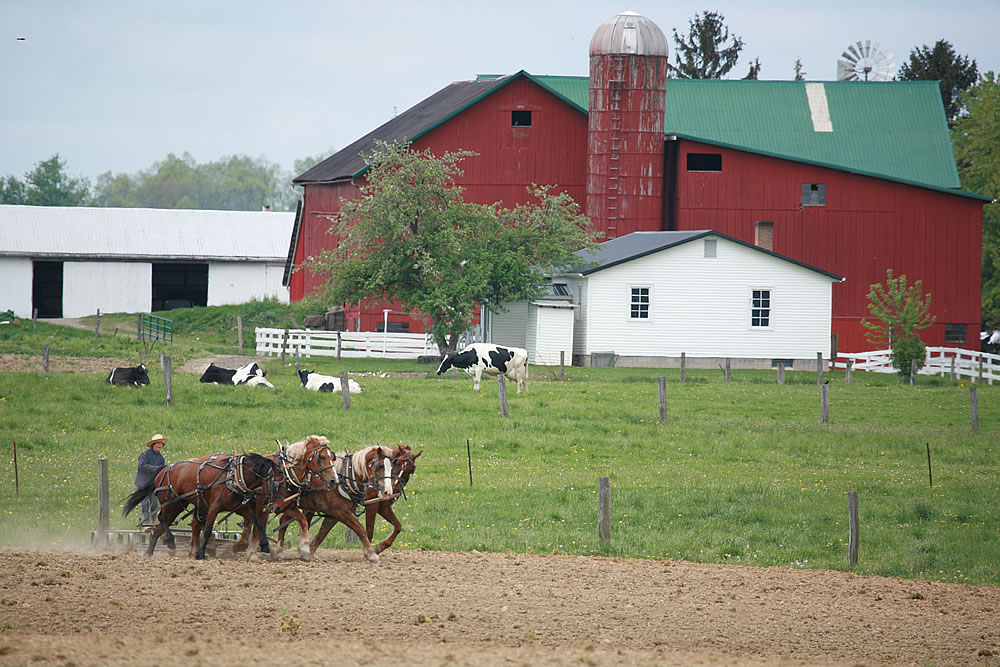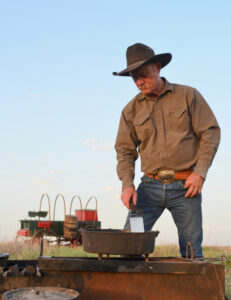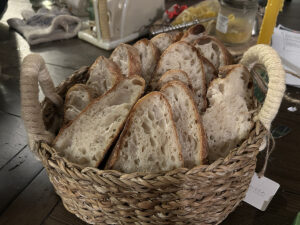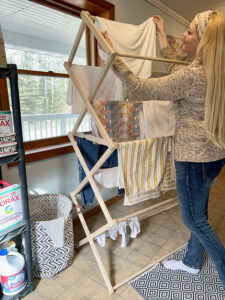
How about a little lesson? We’ll keep it short and interesting. Let’s call it: Some
things you always wondered about the Amish and Mennonites, but didn’t know who to ask.
I am a Mennonite who lives in an area of Ohio with a very large Amish and Mennonite population (in fact, it’s the world’s largest). Allow me to share a very brief overview about the Amish and Mennonites in these parts.
There are four distinct groups of Amish living in the Kidron, Ohio area.
These are:
- Swartzentrubers
- Dans, also called Danners
- Old Order
- New Order
There are additional sub-strains, but these are the main groups.

The “Swartzentrubers” are the most conservative and least modern. The other groups progress up the ladder from there with what “modern conveniences” they will allow. This is an oversimplification though, because there are many other small differences, such as length of men’s hair, width of hat brims, size of bonnets, length of dresses and how many pleats are required in the dresses, colors of clothing, types of harness on the horses, buggies with-or-without doors and windshields… the list goes on and on. Each group has its own Ordnung — a comprehensive list of rules — mostly unwritten. It’s not difficult for local folks to see the differences, but it seems that to most people, an Amishman is an Amishman.
Though these groups are mixed together geographically, they do not worship together or intermarry. They all have their own church districts, preachers, deacons, and bishops. For worship they meet in homes every other Sunday.

There are also several varieties of Mennonites in the neighborhood mix—some of them appearing almost Amish. Others have followed modern culture as far as clothes and conveniences, but maintain the distinctive Anabaptist theology. Unlike the Amish, the Mennonites meet in church buildings for worship.
For the Mennonites and Amish, there is one common denominator: Nearly five-hundred years ago our shared ancestors were part of the Anabaptist movement in Europe—Christians who were baptized as infants, as required by the state church, but who wanted to practice adult believer’s baptism. The term “Anabaptist” means “re-baptizer.” They were considered heretics, and were persecuted — even put to death. The Anabaptists also believe in non-resistance and separation of church and state. These beliefs and teachings continue today in the Mennonite and Amish churches.

Where did the names Mennonite and Amish come from?
A former Catholic priest, Menno Simons, from the Netherlands, was one of the early leaders of the Anabaptist movement. Those who followed his teachings were called Mennonites.
The Amish denomination branched out from the Mennonites a little over three-hundred years ago when a Mennonite leader by the name of Jacob Amman insisted on strictly holding to traditions and enforcing the ban—which meant excommunicating and shunning those who veered from the rules of the church—until they might repent and return. At that time in history, many Mennonites no longer practiced shunning. But Amman and his followers insisted, so they split off and began to be called Amish. 
Of all the groups of Amish in the Kidron area, it’s the “Swartzentrubers” who intrigue me the most, because their ways of living and methods of farming are nearly identical to how our Great-Grandparents, or even Great-Great-Grandparents, lived. To observe the Amish in their daily routines is almost as good as time travel. It feels like time screeched to a halt and waited — so those of us who are curious about how our ancestors lived, can see how it was, firsthand.

I take many walks along the roads through our neighboring Amish farms just outside of Kidron, and as often as possible, I enjoy sharing a friendly greeting or having a small conversation with Amish neighbors. It’s taking a while, but slowly we are learning to know each other, and I can see the look in their eyes is changing from distrust to friendly familiarity.
A young man often passes by me, walking home from work. I greet him in Dutch, and he smiles, and greets me in return.
One day last winter there were teenage boys hauling a wagon load of ice blocks that they had just cut from a pond back in the pasture. The blocks were about eight inches thick and one foot square. They use these for summer refrigeration. The team of draft horses pulling the load was walking slowly, so I asked some questions. Where do they put the ice, and how long will it stay frozen? The young man replied that they have an old truck body with a shed built around it. There is a one-foot gap between the body and the shed wall which is stuffed with insulating material. It surprised me when the young man said the ice will stay frozen until September.
It wasn’t long after this, the same young men were cutting down trees in their woods, and pulling huge logs out to a sawmill in the pasture with the same team of horses. Horses like this are indispensable to the Amish way of life. They are used for plowing, discing, planting, harvesting, pulling manure spreaders, wagons, and logs from the woods, and anything else where we would use a tractor.
There are a number of books available that go into much more depth about the Mennonites and Amish. For further reading, check out the bookstore at Lehman’s. And spend a day in our scenic area for a time of relaxation and unlimited photo opportunities. (However, please refrain from photographing the Amish up close or facing you, as they take literally the Biblical commandment against making “graven images.”)
We leave you with pleasant thoughts from Kidron, Ohio, where the Amish and Mennonite farmers are working long hours in their fields, doing what generations have done before them, and leading the way for many who will follow.
Photos by Bruce Stambaugh and Randy Fath, and courtesy of Dave Ross.






























